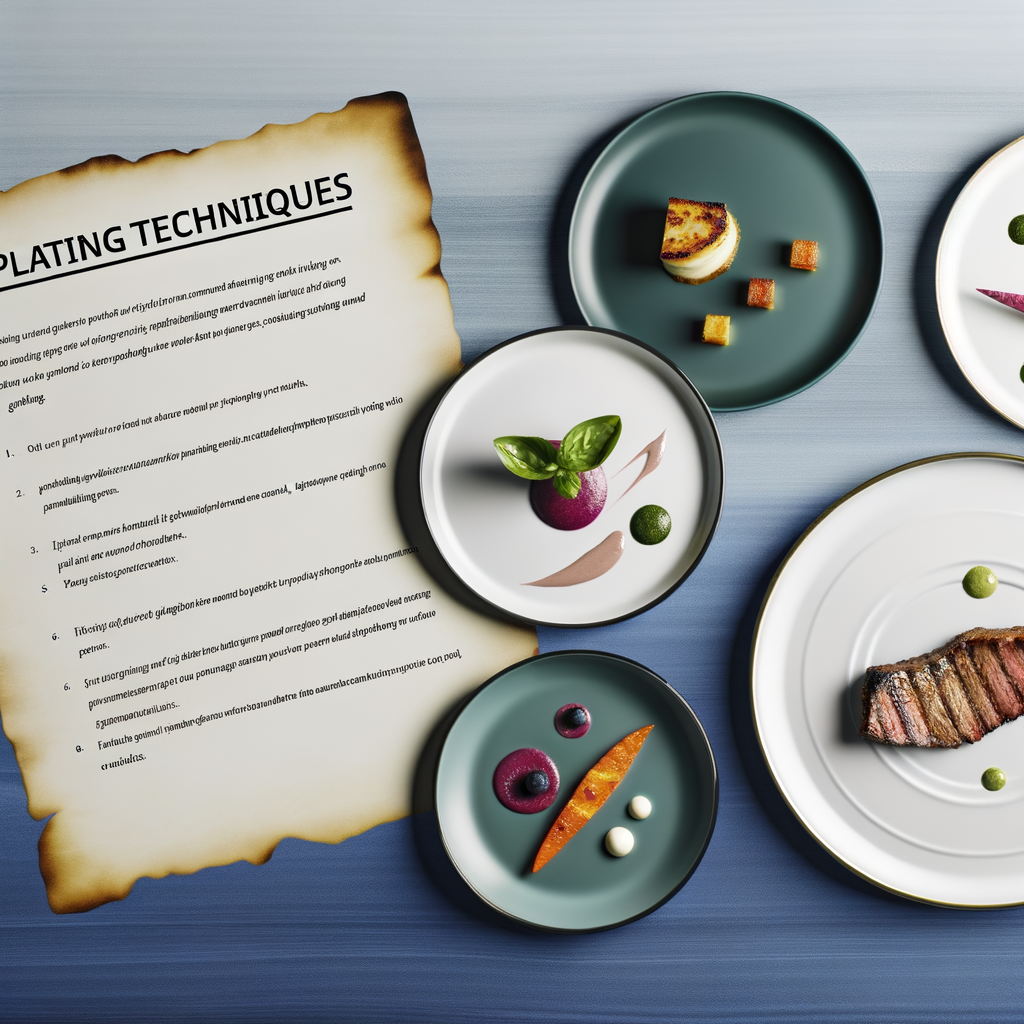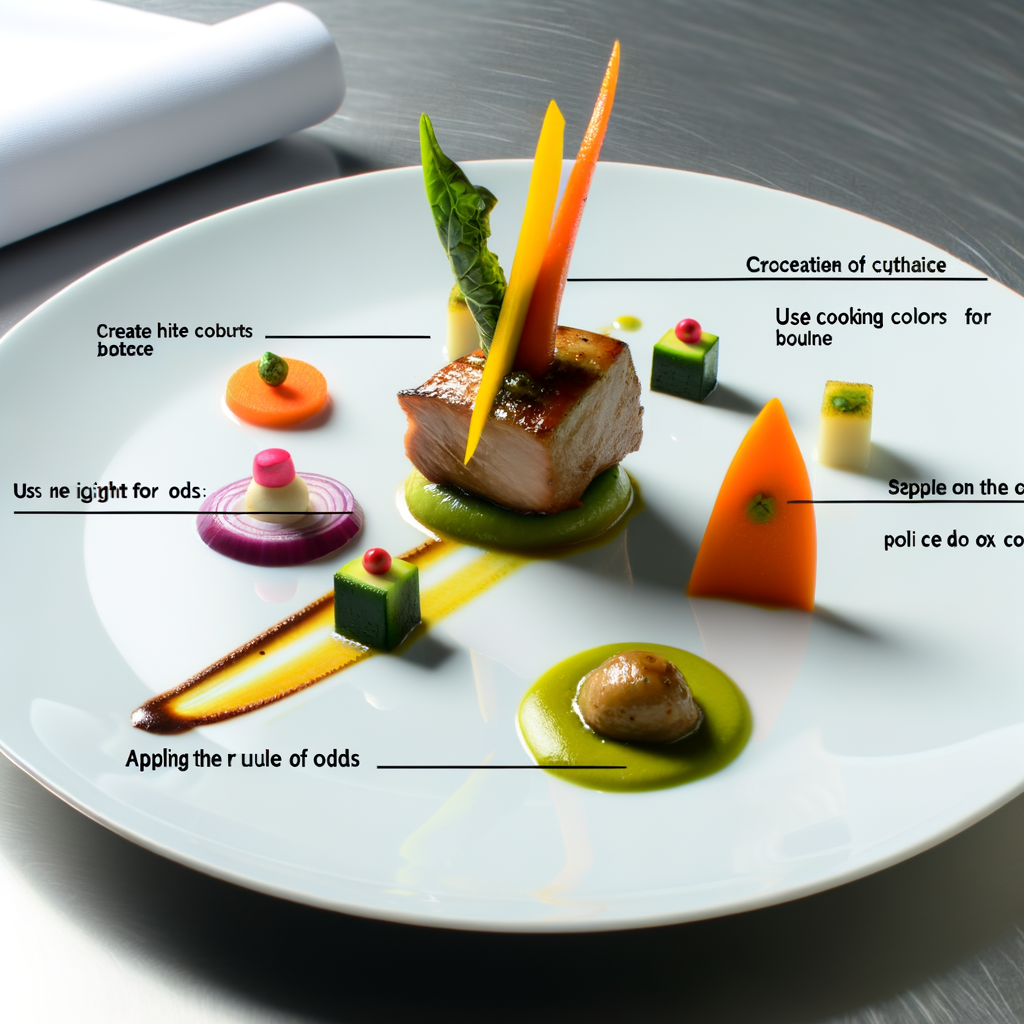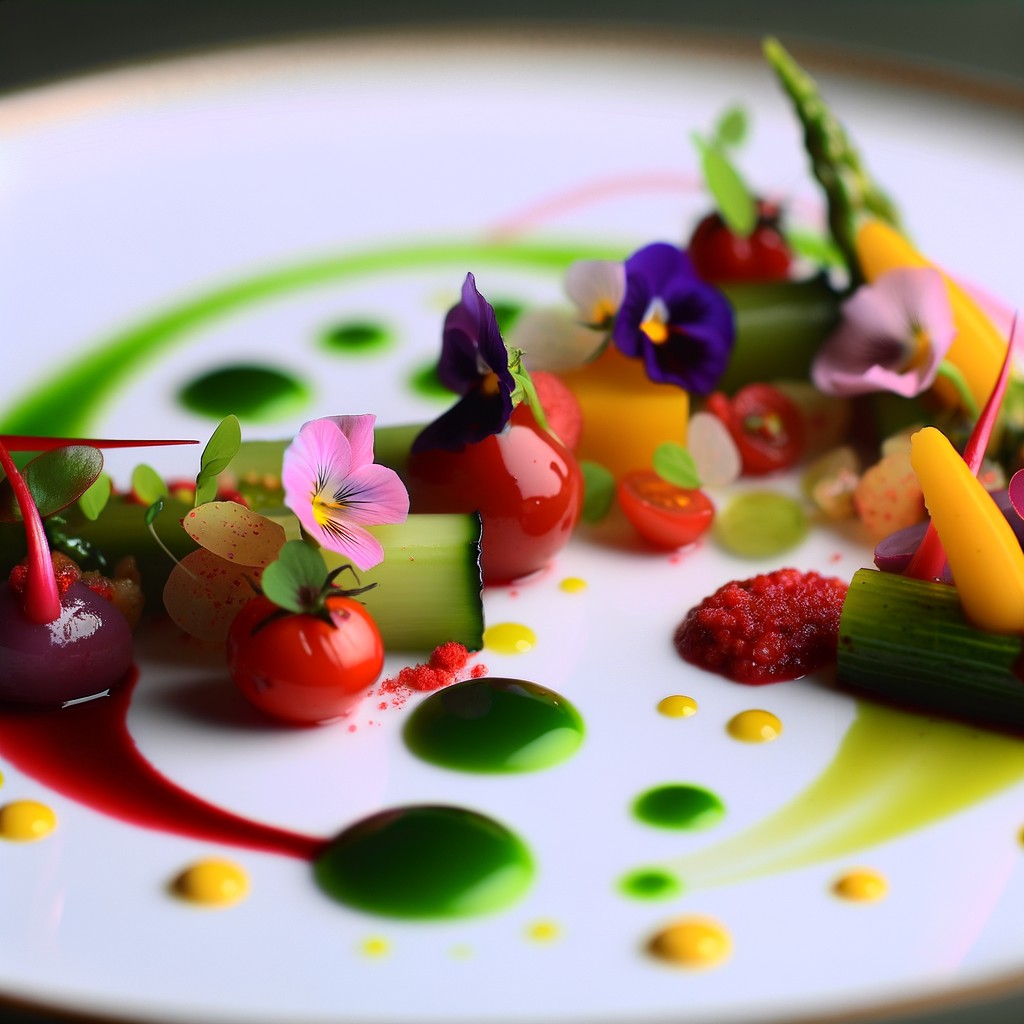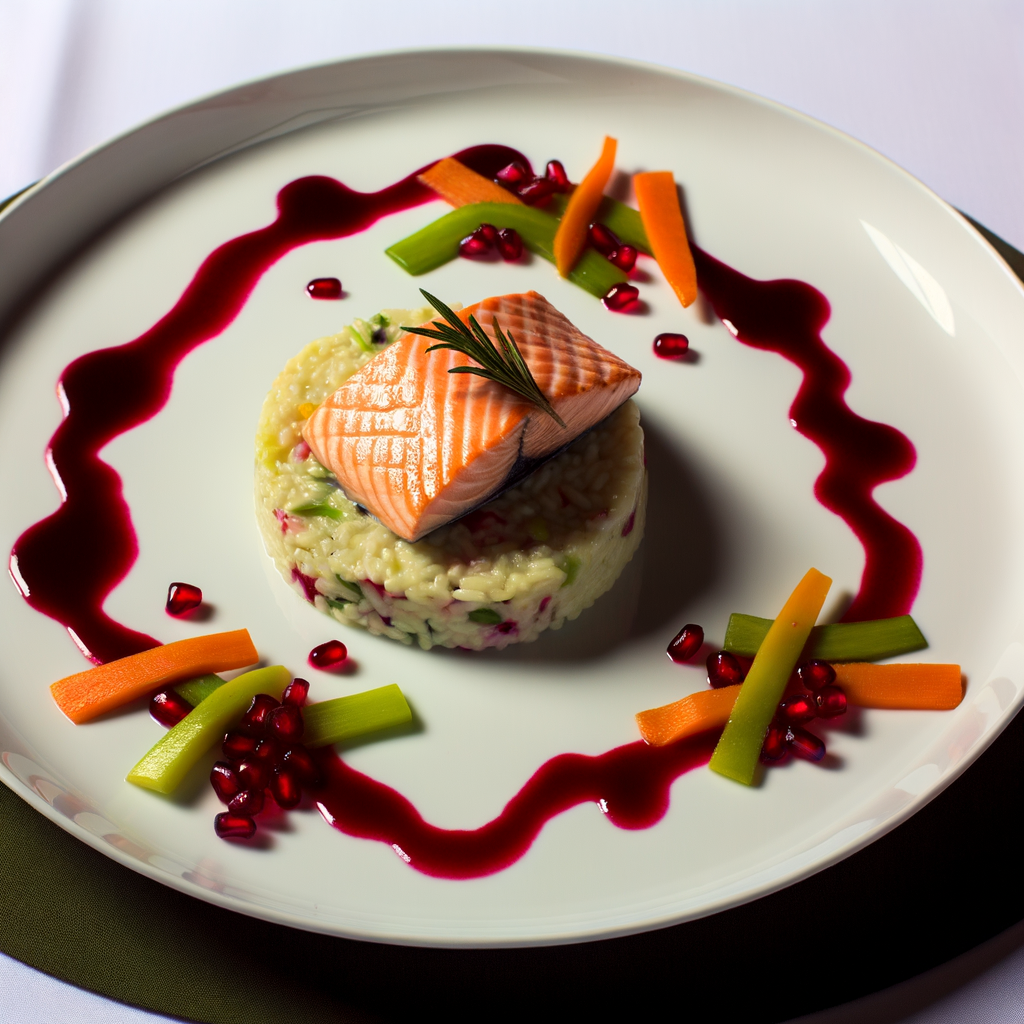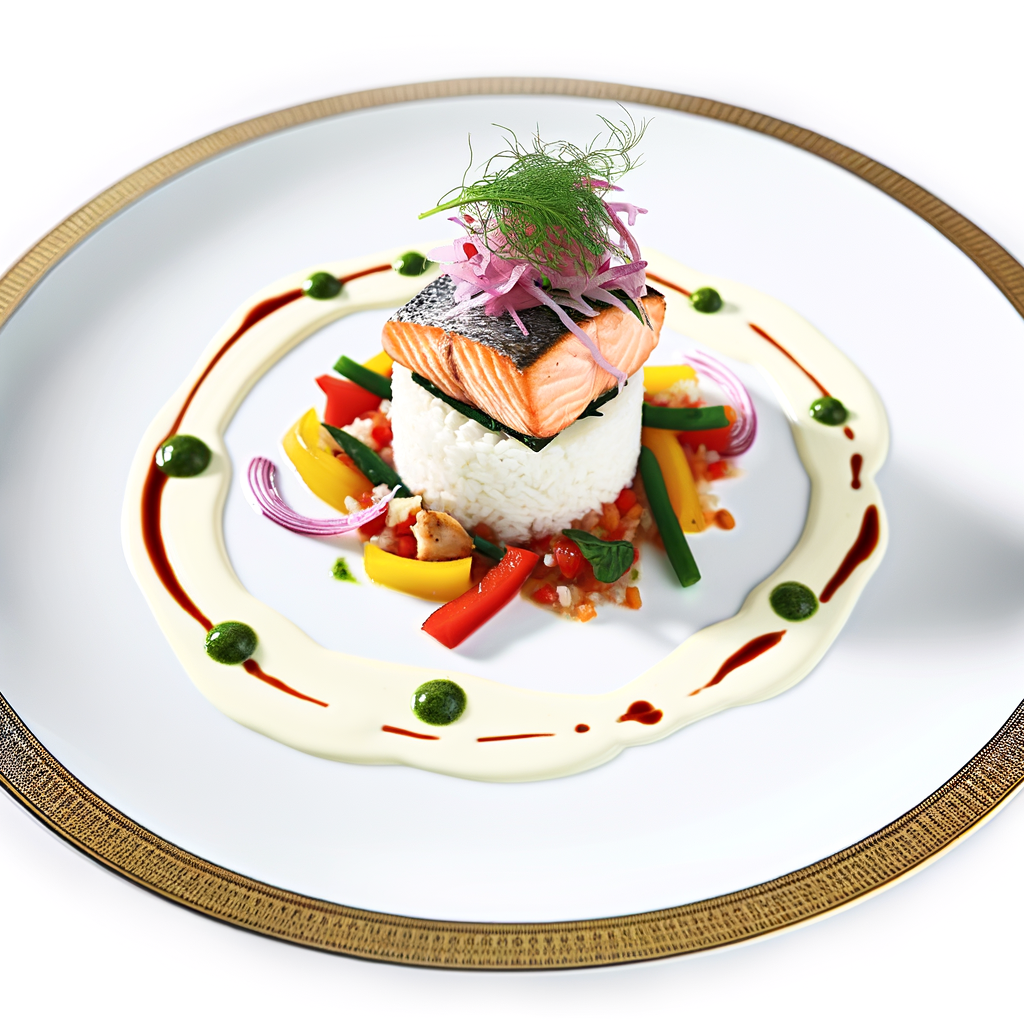As a chef, I have always believed that the presentation of a dish is just as important as its taste. After all, we eat with our eyes first. This is where plating techniques come into play. Plating is an art form that involves arranging and decorating food on a plate to make it visually appealing. And in the world of gourmet cooking, plating is crucial to elevating a dish from good to exceptional.
One of the most important aspects of plating is balance. This can be achieved by using contrasting colors, textures, and shapes. For example, a bright green herb puree can add a pop of color to a dish of seared scallops, which are naturally white in color. The smooth puree also provides a nice contrast to the crispy texture of the scallops. Additionally, using different shapes and sizes of food on a plate can create interest and add dimension to the dish.
Another key element of plating is the use of negative space. This is the empty space around and between the food. Negative space can help highlight the main components of a dish and prevent it from looking cluttered. A simple garnish or sauce drizzle can also add a touch of elegance to the plate.
Finally, the finishing touches of a dish can truly make it stand out. This can include adding a sprinkle of fresh herbs, a dollop of sauce, or even edible flowers. These small details can add a pop of color and enhance the overall presentation of the dish.
In the world of gourmet cooking, plating techniques are just as important as the ingredients and cooking methods. By mastering the art of plating, you can take your dishes to the next level and impress even the most discerning of diners.

